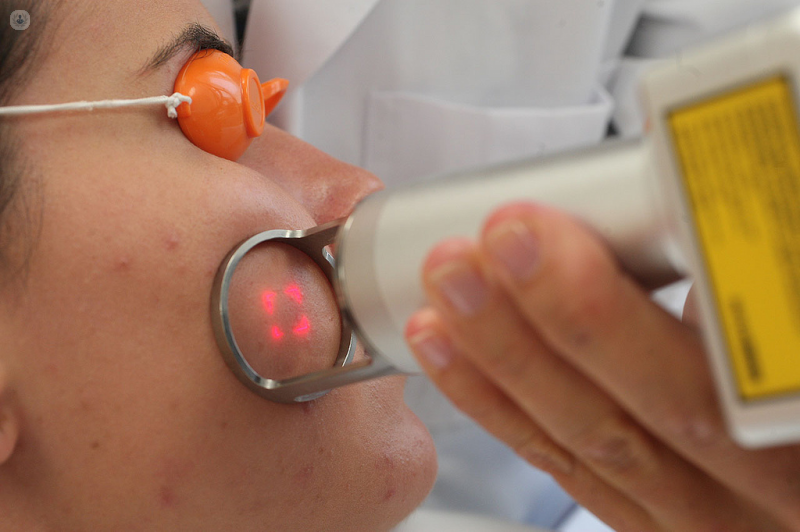Laser pigmentation removal
Dr Tatiana Welsch - Dermatology
Created on: 11-13-2012
Updated on: 04-20-2023
Edited by: Carlota Pano
What is laser pigmented lesion removal?
Pigmented lesions are spots that appear on the skin and are a different colour to the skin on the rest of the body. The main cause of the appearance of spots that appear over time on the arms, hands, neckline or face is exposure to ultraviolet rays from the sun and from artificial tanning lamps. Pigmented lesions are common and most of them are benign, but some people may find them aesthetically unpleasant. These lesions include keratoses, moles, age spots, freckles, sun spots, and melasma.
Most of these lesions can now be removed. In addition to conventional treatments (peels and creams), lasers or pulsed light techniques are also used. These apply intense radiation to the spots to eliminate them. No anaesthetic or special care is required.

Why is it performed?
Many people visit a dermatology clinic because they have spots on their skin, or have noticed them appearing over time, and want to check whether they are something to worry about, or they want to have them removed. Having these pigmented lesions removed results in less blemished skin and a younger complexion.
What does it involve?
Treating pigmented lesions with laser consists of applying a very intense but short shot of radiation. The laser hits the skin and causes the globules that contain the pigment (melanosomes) to rupture. This eliminates the spots effectively and safely.
How to prepare for it
No special preparation is necessary for laser pigmented lesion removal. However, you must avoid solar radiation before, during, and after treatment.
Post-treatment care
Following laser treatment to remove pigmented lesions you only need to protect the skin from solar radiation, as the treated area may be sensitive. You should therefore use a high protection sunscreen.
